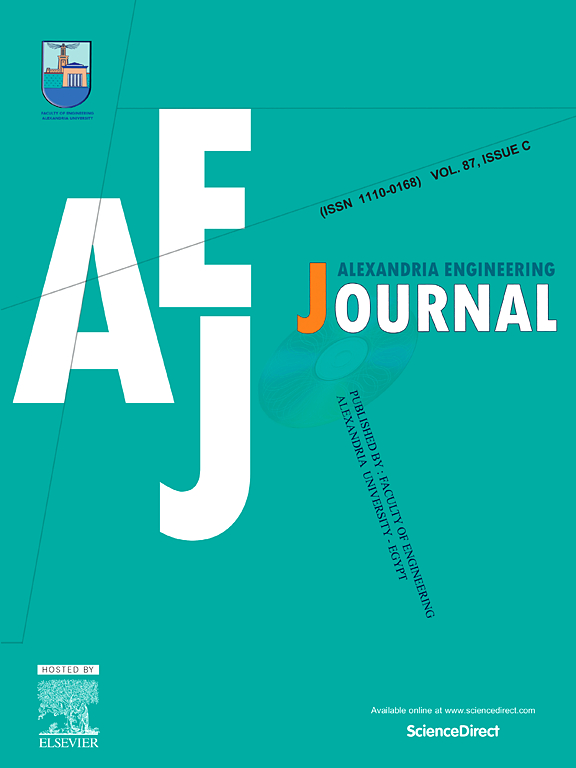Optimization of thermal transfer in Casson hybrid nanofluids with magnetohydrodynamics and activation energy effects
IF 6.2
2区 工程技术
Q1 ENGINEERING, MULTIDISCIPLINARY
引用次数: 0
Abstract
Enhanced heat transfer is still a major challenge in many engineering industries in the modern era including advanced cooling systems and material processing techniques. There have been past researches in the effects of magnetohydrodynamics (MHD), Casson fluids and nanofluid flows, however, there is not much that has been done to investigate the combined effects of these factors in a hybrid nanofluid system while incorporating activation energy, Hall effect and current parameters. Through investigating the inextricable connections between these parameters, the current study introduces a novel approach by employing unified model regarding the aforementioned hybrid Casson nanofluid flow over a stretching sheet. The methodology used in the research consists of transforming the non-linear higher order partial differential equations which represent the fluid behavior into first order linear ordinary differential equations through similarity transformation and using the Runge Kutta 4th order method in conjunction with the shooting technique for numerical analysis. This points out the special role of magnetic and Casson parameters in tangential velocity and reveals the effect of the Hall and current effect on the velocity and temperature profiles. The study also shows the potential of hybrid nanofluids in enhancing the performance of thermal management systems. Besides supplementing an important gap in the current literature, this research provides unique insights to potentially propel innovations in industrial contexts where efficient heat transfer and fluid flow are essential.
求助全文
约1分钟内获得全文
求助全文
来源期刊

alexandria engineering journal
Engineering-General Engineering
CiteScore
11.20
自引率
4.40%
发文量
1015
审稿时长
43 days
期刊介绍:
Alexandria Engineering Journal is an international journal devoted to publishing high quality papers in the field of engineering and applied science. Alexandria Engineering Journal is cited in the Engineering Information Services (EIS) and the Chemical Abstracts (CA). The papers published in Alexandria Engineering Journal are grouped into five sections, according to the following classification:
• Mechanical, Production, Marine and Textile Engineering
• Electrical Engineering, Computer Science and Nuclear Engineering
• Civil and Architecture Engineering
• Chemical Engineering and Applied Sciences
• Environmental Engineering
 求助内容:
求助内容: 应助结果提醒方式:
应助结果提醒方式:


